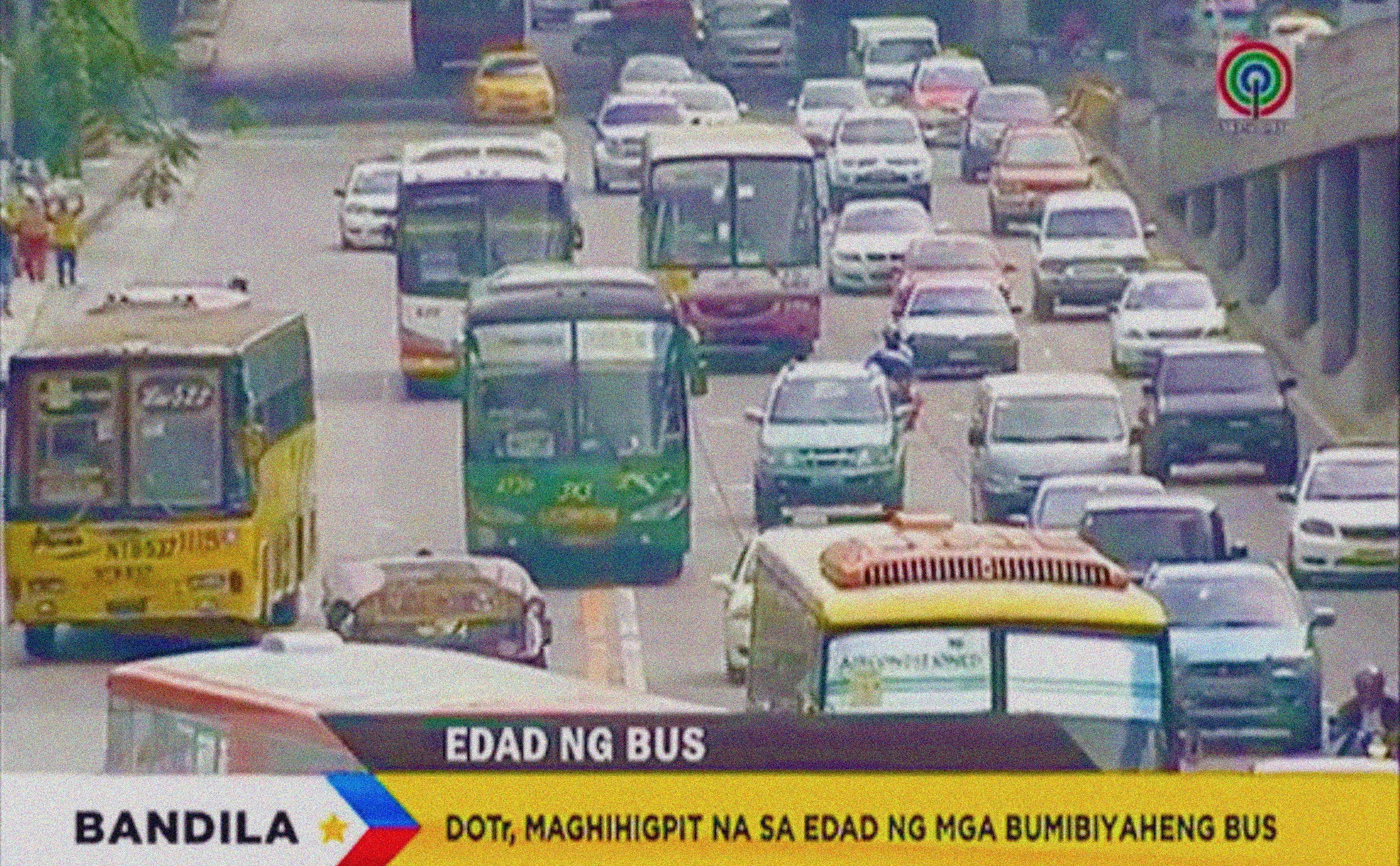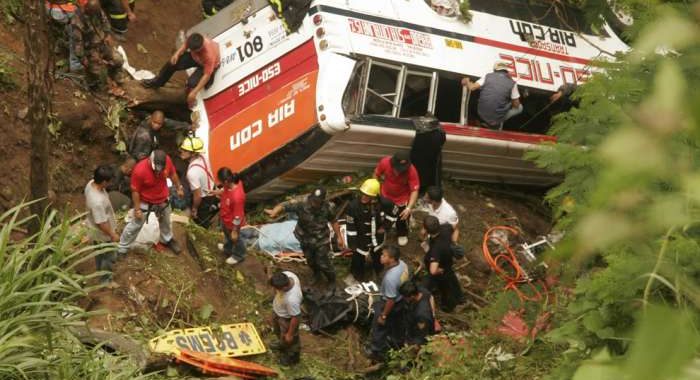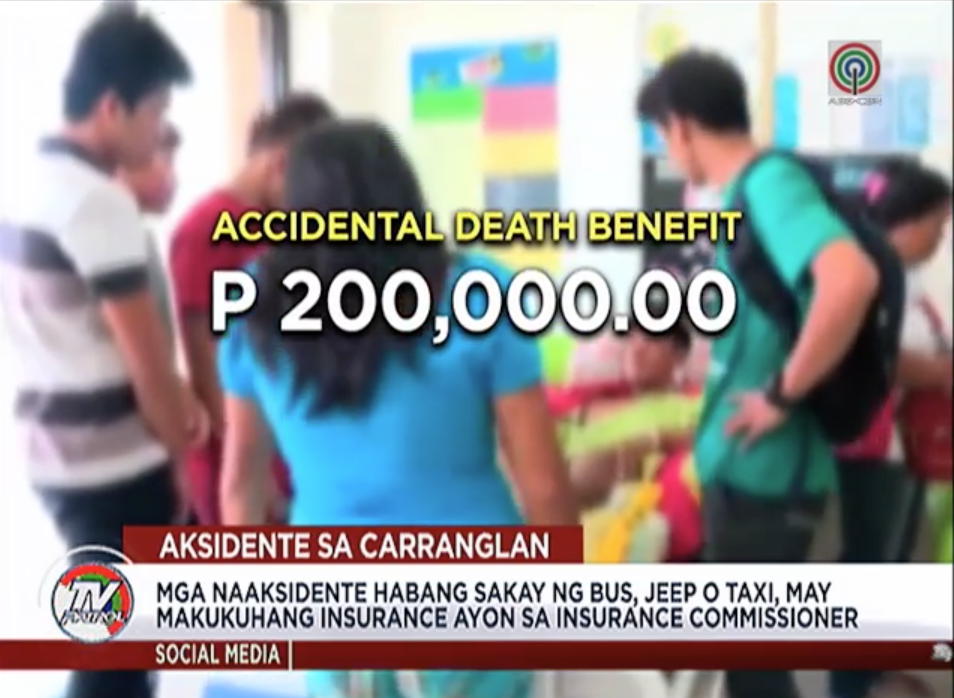FIFTEEN young lives were lost in the most recent bus road crash in Tanay, Rizal. The incident was the most recent in a string of road tragedies that have killed nearly 200 people.
Compared to other forms of mass transportation—airplanes, jeepneys, trains, ships—buses are statistically safer because of the low numerical percentage of road crashes versus deaths. But are they?
Based on statistics provided by the Philippine National Police, road crashes involving jeepneys rank high in terms of loss of lives and destruction to property, followed by buses and then tricycles. The most fatal of road crashes happen in the provinces.
Jeepneys have a higher death rate per crash because of its sheer number on the road and the way the vehicles are built. A frontal crash can, for example, collapse the crucial front and middle pillar that will cause the rood to cave in.
Also, the seating position in a jeepney will hurl the passengers forward and to the side causing neck and chest injuries. Moreover, the number of passengers on board a jeepney—up to 34 sitting passengers on long chassis version — is more than half of a full size bus.
Buses, though carrying more passengers, have more metal to absorb the energy of an impact. Terrible bus crashes involve either hitting another bus or truck, or falling off a ravine. Crashes with the most fatalities are because of the latter reason. In the past 10 years, buses falling off ravines have killed nearly 100 people.
Bus crash deaths are particularly painful because of three things. First, it usually happens because of negligence. Second, in most cases it is usually avoidable. Third, there are no rules that call for the use of safety equipment such as seatbelts in buses—especially for long haul buses.
Sometimes though even the highest rated safety equipment cannot save lives.
Remember that gruesome Don Mariano Transit that fell off Skyway nearly three years ago? That December 16, 2013 incident killed 18 people instantly and injured 20 others. One person, the driver of a van, which was crushed when the bus fell, also died. Two other people passed away due to injuries later, including bus driver Carmelo Calatcat, who tested positive for drugs.
In October that same year, an eight-vehicle smash-up occurred. It involved three buses from DLTB, Superlines, Isarog, four trucks and a passenger vehicle. That incident in Atimonan, Quezon killed 20 passengers and injured 56 others.
And then there is the February 7, 2014 Florida Bus Transit incident that happened in Talubin, Bontoc, Mountain Province that killed comedian and radio announcer Arvin “Tado” Jimenez and 14 others. Only nine days later, an Elavil Transit and an Antonina Liner bus killed five people and injured 40 others in Camarines Sur.
In 2015, four people perished as a Valsino passenger bus crashed at the boundary of Caloocan and Quezon City. The impact of the collision practically stripped off the side of the bus.
In August 2010 a bus carrying 47 passengers plunged from a mountain highway into a 100-foot ravine killing 41 people. It happened while the bus was zigzagging along the mountainous highway of Benguet.
On Christmas eve in 2000, a Cotabato-Davao bus traversing the dangerous road across Bansalan plunged 60 feet down into a ravine killing 30 passengers and injuring 12.
Buses are supposed to free the roads of an excess of private vehicles and perform this task safely. A study of the many bus crashes from the year 2000 until 2016 shows there are only two reasons for these fatal crashes: equipment failure and driver incompetence.
Equipment failure ranks number one, followed by driver error or incompetence.
Atty. Ariel Inton of the Lawyers for Commuters Safety and Protection (LCSP) explains why.
He says that drivers of public utility vehicles do not have the correct and proper training.
“There must be stricter policies on the issuance of professional drivers licenses to drivers of public utility vehicles,” Inton stressed.
“They should not only be holders of professional drivers licenses, but also need to be more educated—not only be trained in driving skills but also they should be taught to focus on their job. Other important skill sets must be added and psychological testing included. Important actions such as anger management, passenger courtesy, and so on,” the lead for the LCSP adds.
He mentioned that drivers are not hired based on the way they drive, but on the ability to operate a vehicle. Driving includes common road courtesy, and understanding of the principles of right of way—instead of the common Filipino drive mentality of “I am here first”— and the application of simple rules such as merge-alternate on intersecting or narrowing lanes.
“It boils down to the mind condition and physical condition of drivers,” he emphasized, saying stories of drunk or drugged drivers are very true and account for some of the major road crash tragedies that have happened in Manila.
“To be able to drive also means an understanding of road traffic. Many of them do not know traffic signs, more so the simple traffic rules. Imagine a simple school zone sign to reduce speed and most bus drivers don’t do it,” Inton clarified.
He also reiterated the often discussed poin t on how operators need to support their drivers giving them better driving conditions and fair employment benefits.
The second reason for most bus crashes is equipment failure.
“I lost my brakes.”
“The engine shut off.”
A lot of buses involved in the accidents mentioned, were old buses, far beyond the required phase out policy of 15 years issued by the Land Transportation and Franchising Regulatory Board. (LTFRB). The bus for example in the Tanay bus crash was over 20 years old, but was not listed as such because when the bus was imported from Japan in 2008, it was registered as brand new.
It is the Land Transportation Office (LTO) which determines the vehicle’s model year based on the year of registration. Thus the old buses, from Japan converted from right hand drive to left hand drive, refurbished and repainted, have run hundreds of thousands of kilometers, but are on paper brand new.
Inton theorizes about the gravity of incidents in the provinces:
First, the terrain is more dangerous, with lots of curves and blind corners. Second, drivers tend to speed up especially at long stretches of road. Third, a lot of roads are poorly engineered with wrong lane markings.
“But if public utility drivers remain conscious of speed and of their responsibility as transporters of many lives, they can also be safer drivers,” Inton concluded.
This story, first published on Malaya Business Insight, was produced under the Bloomberg Initiative Global Road Safety Media Fellowship implemented by the World Health Organization, the Department of Transportation and VERA Files.





